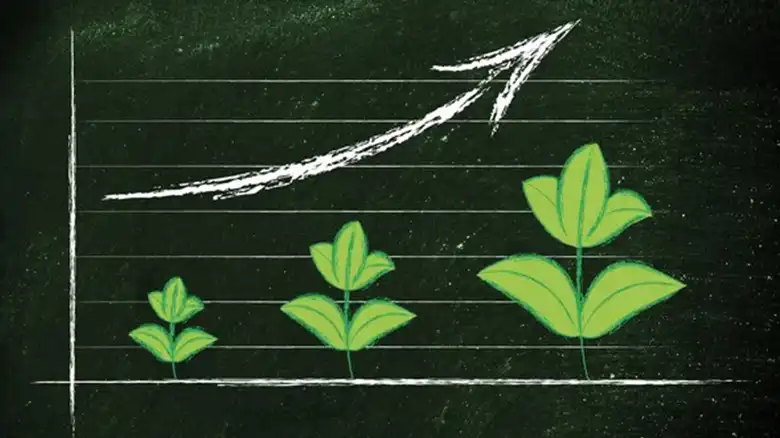What Is Eco Advantage Strategy? Everything You Need to Know
Today it is clearly visible to us how the environment of this planet is changing rapidly and, in this situation, sustainable business practices are no longer a trend, but a necessity. This is where the Eco Advantage Strategy comes in.
Do you have any idea about the eco-advantage strategy? It helps companies to meet the growing demands of environmentally conscious consumers. It can be the savior for organizations in reducing their ecological footprint and improving competition in the marketplace.
In this article, we will explain what the eco-advantage strategy means, what are they, and why businesses need to adopt it. Let’s explore below.

What Does the Eco-Advantage Strategy Mean?
A famous ecologist named Lynne has defined eco-advantage as a concern to make money and do the correct thing for the environment simultaneously.
Basically, an eco-advantage strategy is a business approach to gain a competitive edge by focusing on environmental sustainability in operations and products. By adopting this strategy, a business can enhance resource efficiency, reduce negative environmental impacts, and get more environmentally conscious consumers.
Eco-advantage strategies combine 5 strategies that make the business eco-sustainable and profitable. Let’s learn about them in detail in the next section.
The Five Strategies of Eco-Advantage
Here is given a brief discussion about the 5 eco-advantage strategies that can help a business hold the marketplace while giving something good to the planet. Let’s get explore below.
Strategy 1: Eco-Efficiency
The first strategy, Eco-Efficiency, aims to lower production costs by eliminating unnecessary things that customers don’t want. It helps businesses to use resources more efficiently, find innovative ways to utilize waste, and reduce the environmental impact.
This strategy is beneficial for industrial firms that have high processing costs. After implementing this strategy, these industrial firms can save a significant amount of cost and enrage production.
Strategy 2: Beyond Compliance Leadership
The second strategy, Beyond Compliance Leadership, focuses on making the company different from others in the market by doing environment-friendly business. This strategy helps a business get recognized as a brand and gain higher stock prices.
For example, a company can enhance its reputation, attract customers, and influence industry standards and regulations by voluntarily joining green clubs and achieving certifications like ISO 14000.
Strategy 3: Eco-Branding
The third strategy, Eco-Branding, indicates differentiating products through eco-friendly labels. With this strategy, companies can highlight the environmental features of their products and charge higher prices for these green products.
Eco-labels on products can also help the company get more customers. However, many companies have already adopted this strategy and started introducing their eco-friendly products.
Strategy 4: Environmental Cost Leadership
The fourth strategy, Environmental Cost Leadership, focuses on being the cheapest in the market while minimizing the environmental impact. It is particularly advantageous for companies with environmentally friendly products and low profit margins.
Though according to the previous strategy, you can sell products at a higher cost; but if the price for your product is higher than other eco-branded products, then customers won’t buy it from you. Environmental cost leadership strategy will help you get the competitive edge while you’re focusing on eco-products.
Strategy 5: Sustainable Value Innovation
The fifth strategy, Sustainable Value Innovation, helps companies get innovative ideas about how to rank in the competition, how to produce sustainable products, and how to get more consumers.
For companies that provide environmentally friendly products or services with lower costs, this strategy can help them create new value propositions and attract customers. However, implementing this strategy may require coordination with suppliers and involves strategic trade-offs.
Benefits of the Eco-Advantage Strategy
Eco Advantage Strategies are basically implemented by companies so that they can be benefited economically and environmentally. Here we’ve outlined some possible benefits that you can get by implementing the eco-advantage strategies:
- Sustainable Product Design: These strategies help companies to develop environmentally friendly products. By incorporating sustainable materials, reducing waste, and designing for recyclability, companies can create products that minimize environmental harm while meeting consumer needs.
- Enhanced Reputation: Companies can prioritize environmental sustainability with the help of these strategies that create a positive image for the company. A positive brand image and reputation can increase stakeholder engagement, customer loyalty, and the morale of employees.
- Cost Savings: As these strategies help optimize resource utilization, measure energy efficiency, and reduce waste; they can lead to significant cost savings in the long run. It simply helps businesses reduce operational expenses, enhance productivity, and achieve better overall financial performance.
- Competitive Edge: Adopting sustainable practices can differentiate businesses from their competitors and attract more eco-conscious consumers. So, it helps companies to survive in the competitive market.
- Regulatory Compliance: Embracing the eco-advantage strategy helps companies stay ahead of evolving environmental regulations. In this way, organizations can stay safe from any kinds of financial risks associated with non-compliance.
Frequently Asked Questions and Answers (FAQs)
What Are The Strategies Of Eco-Efficiency?
The strategies of eco-efficiency help reduce pollution levels and waste and conserve energy, water, and raw materials. It helps to make a sustainable living.
Why Do People Buy Green Products?
Most eco-conscious people buy green products because they understand the circumstances of environmental pollution. As you know global warming has consequences like heat waves and soil degradation; your small contribution can help you stay safe on this planet. Buying green products can be counted as a small contribution to reducing your environmental footprint.
Why Is Eco Innovation Important?
Being an eco-innovative organization can have a lot of benefits. In this way, the company can reduce material consumption as well as internal and management costs and also can use resources efficiently. By being eco-friendly, the company can gain favors from all the eco-conscious people, help to gain a reputation and stay in the top rank in the competition.
Conclusion
In the era of increasing environmental concerns and consumer demands for sustainable solutions, the eco-advantage strategy offers a pathway for businesses to gain more profit while reducing the bad impact of the business on the environment. We hope you’ve found this guide helpful in understanding what the eco-advantage strategy is and why they are important. If you have any further queries regarding this topic, don’t hesitate to ask in the comment section below. Thanks for reading.
